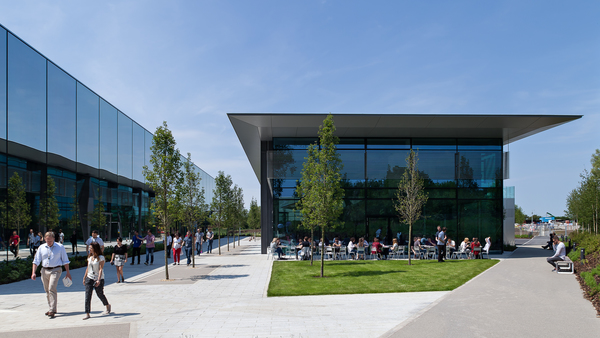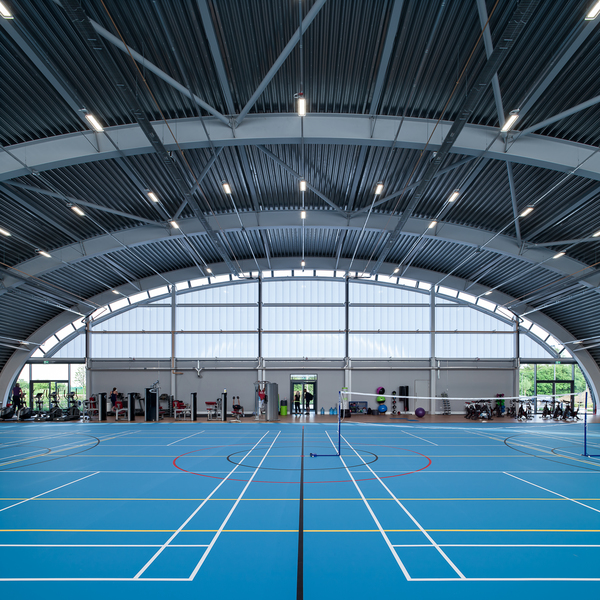Dyson Campus Expansion
Wiltshire

Project Details
£10m to £49.99M
At the time that WilkinsonEyre was invited to design this new factory and headquarters building, Dyson was one of the fastest growing companies in the UK. The new development therefore needed to embrace an extensive range of uses and be built and occupied in a rolling programme. Our original masterplan for the overall site optimised the layout of a range of functions whilst incorporating flexibility for future expansion. The design created an exciting yet economical space with an undulating wave form roof which ‘floats’ above the trees, disguising the bulk of the factory. The architecture is derived from a clear expression of the structure and a limited palette of materials, and is designed as repetitions of a standard module. New and existing buildings on the site are linked by an exciting crystalline cube, distinguished by a lightweight canopy, which contrasts with the ‘sheds’ either side and draws in approaching visitors. Following the updated masterplanning exercise undertaken in 2012, WilkinsonEyre has now completed the first phase of the expansion to the Dyson campus in Malmesbury. The overall architectural concept for the updated masterplan follows the existing design philosophy of creating lightweight modern pavilions in a landscaped setting. Phase 1 comprises a new research and design development building (Dyson 9); a café; energy centre; new car park; sports facility and helipad. Dyson 9, the new research and design development building, is conceived as a minimal, reflective glass pavilion within a sheltered rural landscape setting. The buildings cladding is formed of highly reflective glazed panels designed to obscure views into the building for security reasons while maintaining outward views and daylighting to the interior. The cladding also has the effect of making the building ‘disappear’ into the landscape by offering a mirror to the established surroundings.


